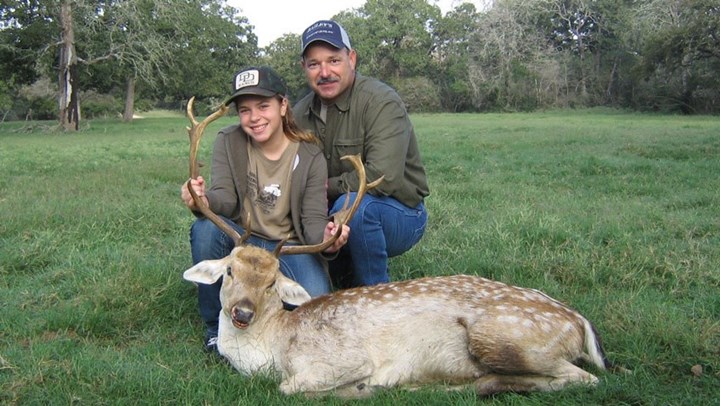
by Heidi Lyn Rao - Saturday, July 6, 2019

Hunters have a duty to introduce others, especially youth, to our sport, ensuring that our hunting heritage survives. By getting new stakeholders vested in hunting, we create a new base of young people that will grow into voting adults. We are uniquely positioned to intercept and correct misinformation being disseminated by anti-hunting factions and to arm these young hunters so they can spread the truth about hunting among their peers.
Mentoring Matters
Every hunter should make it his or her goal to recruit and mentor as many new hunters as can be done correctly. The key is that it be done correctly. Often the same mistakes are made again and again. Despite best intentions, hunts are often poorly planned within a restrictive timeframe or the age and skill of the participant is not taken into consideration. These experiences can turn an individual away from hunting.
An organization might get complacent, allowing youth hunting programs to turn into feel-good opportunities for the organization. Mentoring new hunters is not a numbers game. Pumping as many kids through a program as quickly as possible, in a competition to see which organization introduces the most kids to hunting, is detrimental to retainment and the R3 movement to recruit, retain and reactivate hunters. A mentor is a teacher, guiding the new hunter on legal, regulated and ethical hunts and fielding questions with correct information and proper respect for every aspect of the sport. The mentor who shows off skills or brags about experiences only leaves the new hunter trying to measure up instead of focusing on the experience.
Mentors Need Training
To properly mentor a new hunter, the mentor must be properly trained. This training can be formal or informal. You should conduct Internet searches on the flora and fauna of the area, talk to those involved in state hunter education programs for ideas on introducing individuals to hunting and compare techniques with other hunting mentors. Some formal training opportunities include the National Rifle Association’s (NRA) instructor courses in rifle, pistol and shotgun. Mentors can become hunter education instructors in their state, ensuring that safety is stressed. Wildlife classes and workshops conducted by state conservation departments are invaluable sources of information, too.
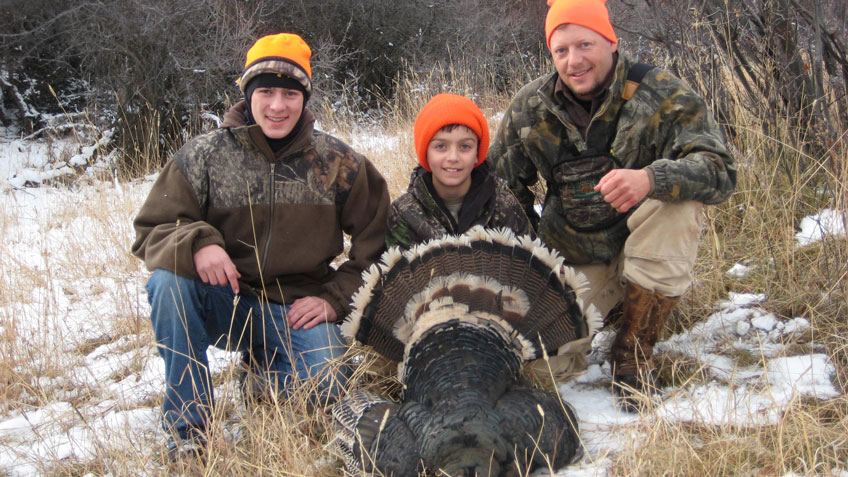
Mentors Arise from Three Sources
Mentors usually stem from one of three groups: personal contacts, organizational guides or landowners. Parents, other relatives and close friends are mentors formed by blood or personal relationships. Hunting clubs, conservation clubs, state wildlife agencies and youth hunting organizations all offer the opportunity to forge new mentors. The same goes for landowners or their agents. To make a lasting hunter, it takes a mentor who is willing to ensure the student is properly prepared before the hunt, taken care of during the hunt and followed up with after the hunt.
Outfit the New Hunter for Success
Unless all equipment is being supplied, those who have a personal relationship with the youth are often responsible for purchasing his or her first firearm or at least offering advice on the purchase. It is human nature to look for bargains, but quality rifles that will last a lifetime and are known for dependability and accuracy seldom come in combo packages. Make sure your new hunter’s first firearm is of good quality. While it is natural that hunters may experience doubts or concerns about their first hunt, their main piece of equipment should not be one of them.
Just as important as the rifle is the optics, or scope, which connects the shooter’s eye, bullet and target. How well a scope performs is crucial, though a quality scope can cost as much, if not more, than the rifle. The quality of the glass determines the clarity of the image and prices will reflect that. Fortunately for mentors, numerous manufacturers offer scopes that are adequate and reasonably priced, considering first-time hunters typically will not be taking long-range shots on game animals where higher-end scopes can make the difference in clarity and target acquisition.
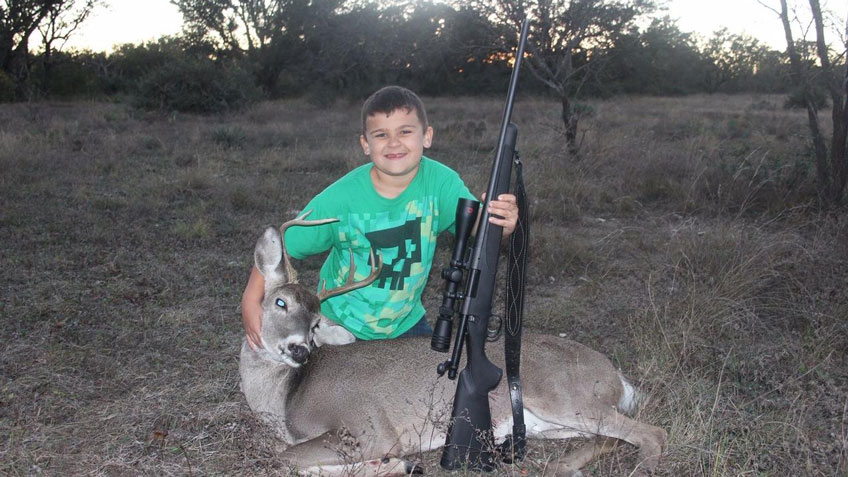
Other factors in determining which scope to purchase are magnification and objective lens. The higher the magnification, usually, the higher the cost. Hunters may use a higher magnification to get a close-up view of their target animal (after glassing it with binoculars) then they can dial the magnification down to a smaller magnification for a bigger field of view and because it can be difficult for a new hunter to hold the crosshairs steady at higher magnifications.
As far as objective lenses go, pick the largest one you can. It will let in more light and translates into a better picture in low-light conditions. Game species often are most active at sunup or sunset. A new hunter needs all the help he or she can get in target identification and shot placement. Put yourself in a new hunter’s shoes: You have helped him or her to pick out a rifle and scope, train on the range, learn about wildlife, habitat and how to hunt safely, and placed him or her on game for the first time. Now it is all on your new hunter, who does not want to let you down.
Just as important as your choice in rifle and scope is your choice in ammunition. The most common problem I see on youth hunts is a wounded deer due to the use of cheap ammo. Some mentors do not understand the differences in ammo and some buy in bulk for cost savings. Look for maximum expansion and penetration, even at added cost. All the rifle does is deliver the bullet to the target. In turn, you want the bullet to do its job when it gets there.
Other equipment, such as binoculars, range finders, proper clothing and the like can be borrowed or shared. The idea is to not have the new hunter incur such a high expense that it deters him or her from hunting.
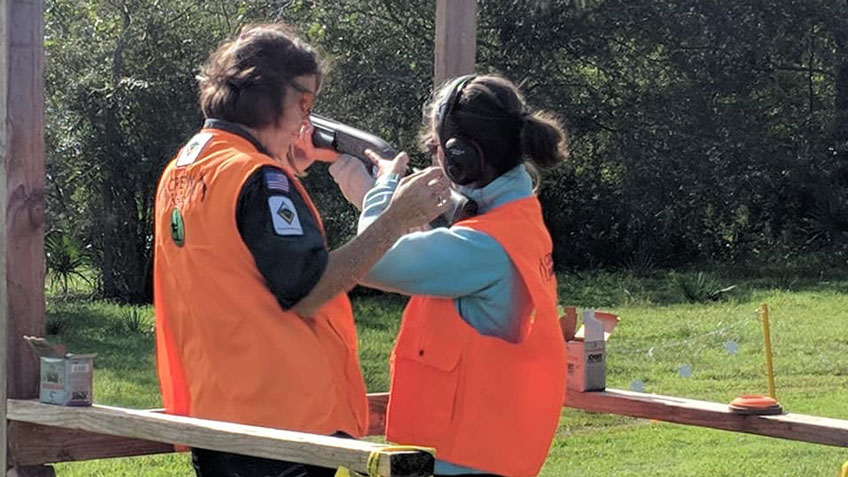
Range Time is Not a One-Time Event
Before the hunt, make sure you take the new hunter to the range as many times as is necessary to sight-in the rifle and ensure that the hunter is comfortable with the firearm. In the case of a shotgun, go as often as it takes for the hunter to be consistent in breaking clay pigeons. Try to shoot at the range at the same time of day when you plan to be hunting. If you are mentoring a deer hunter, for example, he or she will be hunting at sunrise and late evening prior to sunset when it is cooler and damper.
Guides Come from Clubs, Wildlife Agencies and Organizations
Organizational guides are usually members of hunting or conservation clubs, state wildlife agencies or youth hunting organizations. If an organization commits to recruiting new hunters and has established youth and adult hunter programs, the organization should commit to purchasing appropriate equipment, including quality ammunition.
If possible, an organization’s guide (mentor) should be assigned to a hunter long before a hunt. It takes planning to match mentors to hunters who live close to each other. This enables the mentor to accompany the hunter to a range and initiates a relationship so the hunter feels comfortable enough to ask questions. There is a big benefit to the mentor taking the hunter to the range just prior to the hunt to verify that the rifle is sighted in and that the hunter can hit the target. Once the hunt begins, the mentor and hunter hopefully will be comfortable with each other. After the hunt, the mentor will be available for questions about processing, meat preparation and cooking, transfer documents or feelings the hunter may be experiencing.
Organizations should vet their members who serve as guides and mentors. Mentors need to undergo a criminal history check, believe in the mission of the organization and be certified as NRA firearm and hunter education instructors.
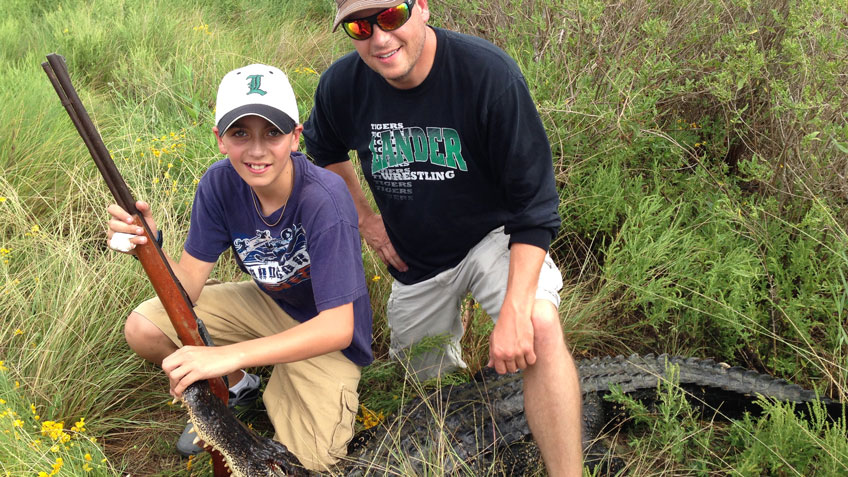
Landowners Can Be Mentors Too
Landowners and their agents are private parties who allow individuals or program coordinators to conduct hunts for beginners on their property. Many landowners look forward to first-time hunts, especially youth hunts. Ladies-only hunts are becoming more popular as well as hunts for adult men. Landowners usually partner with hunting organizations.
There are things landowners can do to help first-time hunters enjoy success. For example, a landowner offering a whitetail hunt for first-time hunters can plan it early in the season when the deer are less wary and move more freely. Landowners know their land and the game. If a first-time hunter is not having any luck, the landowner can step in and help the hunter find certain animals. It is about the first taste of success. We want new hunters to reap the rewards of their hard work in preparing for this hunt. There is always another trip to learn the lesson of coming up empty-handed.
When the landowner participates and interacts with the hunters it makes an impact, especially if he or she listens to the young hunters’ experiences while on the property. One of the most memorable youth hunts I had the privilege of conducting was on an exclusive ranch in Texas. It was not because the ranch was owned by a Texas billionaire who hunted all over the world, or contained herds of animals from all corners of the world, or possessed all the amenities of a first-class hunting lodge. It was because these kids and their parents were treated as equally important hunters, not just by the guides and staff, but by the ranch owner.
This man-of-means opened his home to these families, making them feel welcome as fellow hunters, not beneficiaries of his generosity. He helped guide, gave hunting advice and became invested in their success. When it came time to eat, he got his plate and sat among the hunters and their families. I overheard people asking the rancher about his hunting trips around the world and his response was always the same: “I would prefer to hear about your hunting trips.” That is how you leave a legacy.
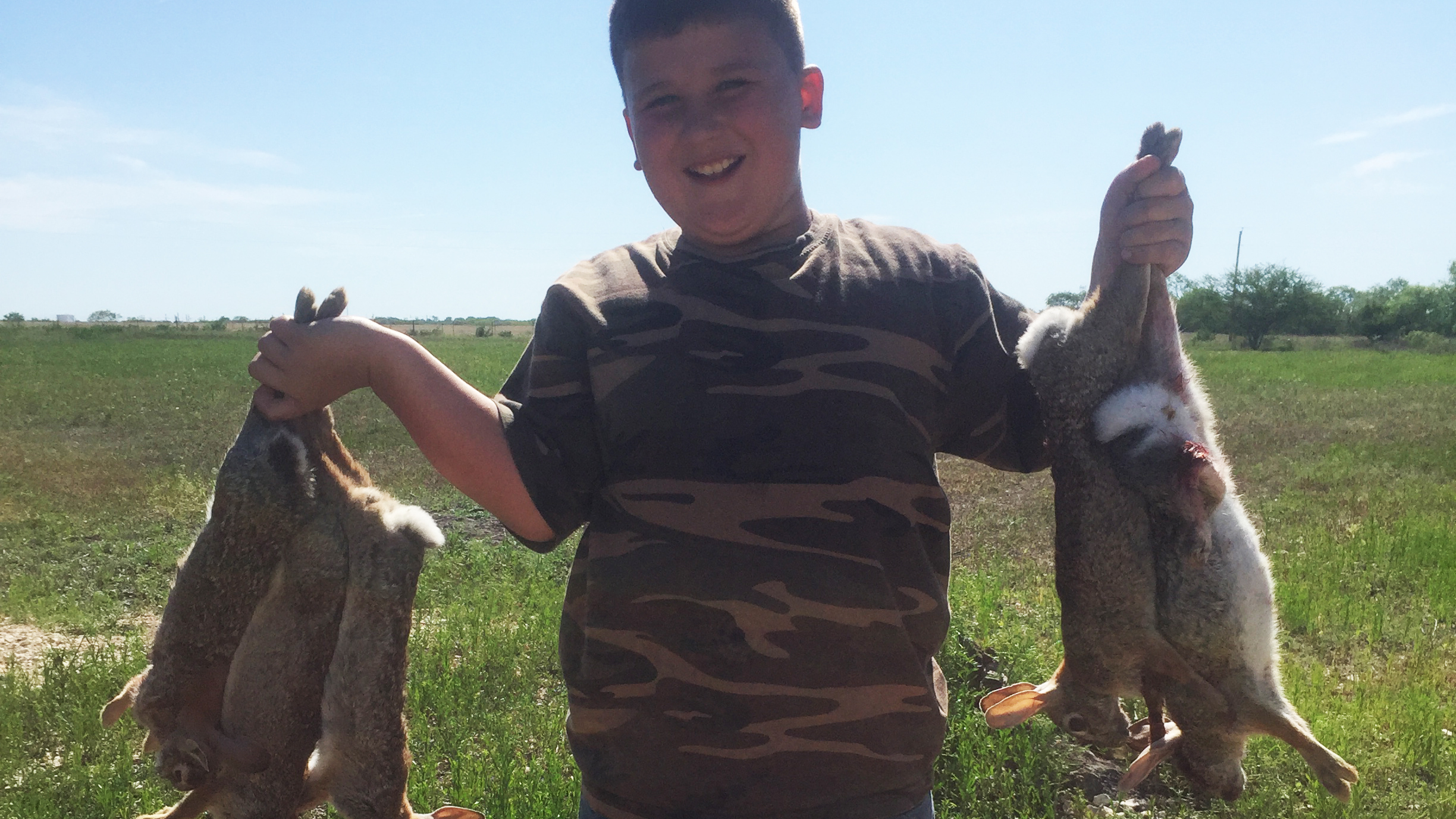
About the author: Heidi Rao’s job requires her to travel the state of Texas, coordinating programs on a variety of outdoor-related topics, on many of which she is considered an expert. These topics include species-specific workshops (alligator, feral hog, white-tailed deer and waterfowl), small and big-game hunting, trapping, hunter responsibilities, game laws and ethics, and outdoor survival. Additionally, Heidi conducts shooting clinics on rifle, shotgun, handgun, archery and crossbow, reaching thousands of adults and youth annually.
Heidi is very involved with the National Rifle Association (NRA) and is an NRA Training Counselor, certified to teach NRA Shotgun, Rifle and Pistol instructor courses. She is also an NRA Shotgun Coach. She is a member of the Youth Programs Committee, meeting near the NRA Headquarters in Virginia each year. Lastly, Heidi is profiled on NRA Women TV: New Energy.
Heidi conducts seminars addressing different sportsmen and conservation groups on both the national and international levels. She is well respected in her field and has received numerous professional awards in hunting and conservation. Some of these awards include Professional of the Year and Executive Director’s Awards presented by the International Hunter Education Association and the Houston Safari Club’s Conservationist of the Year. Heidi has written several books about hunting large predators in her area of Texas, teaching kids to hunt and shoot, and about firearms. These publications include:
E-mail your comments/questions about this site to:
[email protected]
